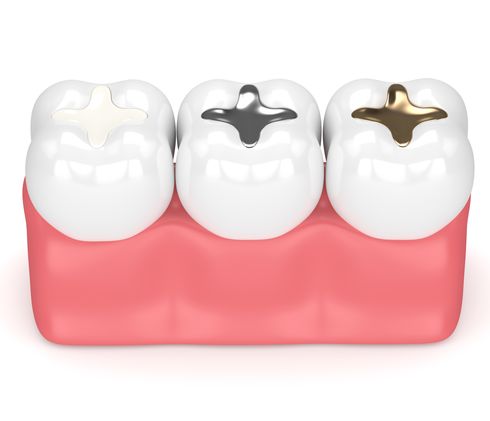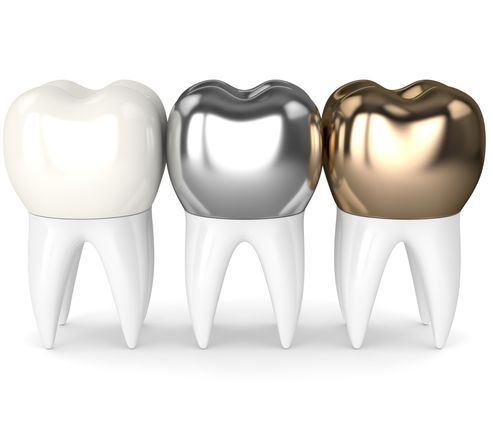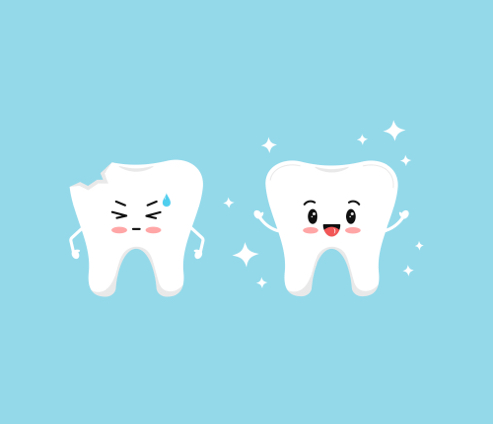Help maintain your child’s dental health
There are a few types of restorative procedures used to improve the shape or strength of a tooth like fillings or crowns.

Traditional dental restoratives, or fillings, may include gold, porcelain, or composite. Newer dental fillings include ceramic and plastic compounds that mimic the appearance of natural teeth. These compounds, often called composite resins, are typically used on the front teeth where a natural appearance is important. There are two different kinds of fillings: direct and indirect. Direct fillings are fillings placed directly into a prepared cavity in a single visit. Indirect fillings include inlays or veneers fabricated with ceramics or composites and generally require two or more visits.

Crowns are a restorative procedure used to improve the shape or strength of a tooth. A crown is a “cap” cemented onto an existing tooth that usually covers the portion of the tooth above the gum line. In effect, the crown becomes the tooth’s new outer surface. Crowns can be made of porcelain, metal or both. Porcelain crowns are preferred because they mimic the translucency of natural teeth and are very strong.
Crowns or onlays (partial crowns) are most often used for teeth that are broken, worn, or have portions destroyed by tooth decay when there is insufficient tooth strength remaining to hold a filling. Unlike fillings, which involve applying restorative material directly into the mouth, a crown is made in a lab based on your child’s unique tooth impression. The dental lab technician examines all aspects of your child’s bite and jaw movements and then sculpts the crown precisely for your child so that his or her bite and jaw movements function normally once the crown is in place.

Children’s teeth bonding is dental filling used to restore and reshape teeth. The process improves both mouth function and aesthetic appearance. The bonding material is either a composite resin or ceramic that hardens under a specialized light and fuses with the treated tooth.
Dental bonding is a comfortable, non-invasive procedure. To complete the restoration or cosmetic improvement, your Doctor will roughen the surface a bit and coat the tooth lightly with conditioning liquid. The tooth-colored resin will be applied next, to shaded to match your child’s natural teeth closely. The material will be shaped to perfection then hardened.
Your Doctor may use children’s dental bonding to correct:
A children’s teeth bonding is an in-office procedure that takes about an hour to complete. If necessary, the affected tooth will be filed down slightly to achieve a stronger bond. Then a thin layer of bonding material is applied and sculpted to appropriate size and shape. Under a special like, the material will harden and fuse firmly with the treated tooth. Lastly, the bonded tooth is polished until smoothed out.
Treatment for dental bonding takes about one hour, and the results can last about a decade. Once the bond is secure, the tooth will function and appear just like the surrounding natural teeth.
We truly care about your child’s health and happiness. Reach out to get your child’s appointment scheduled. We can’t wait to see you.